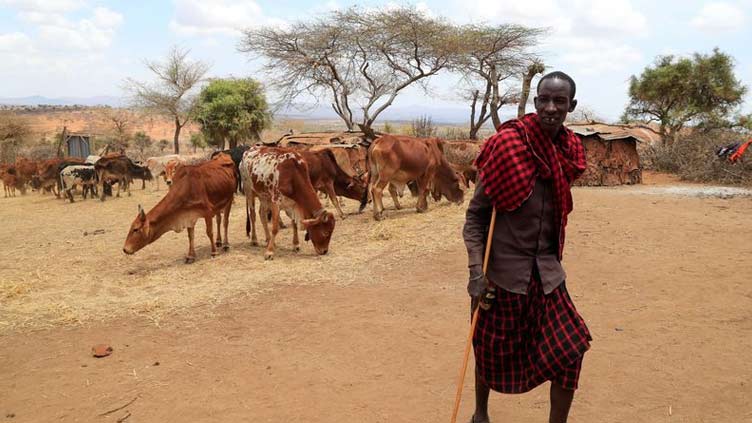Drought forces Kenya's Maasai to sell starving cattle for a pittance

World
Drought forces Kenya's Maasai to sell starving cattle for a pittance
ILBISIL (Reuters) - Cows too weak to stand, with sores on their hides from lying on the ground and ribcages protruding from their sides -- such is the painful sight faced by Kenya s Maasai herders as they struggle to keep their cattle alive in a severe drought.
Livestock are central to the traditional Maasai way of life, not only as the main source of food and income but also as a marker of social status and constant presence, with cows living alongside people inside circular enclosures called kraals.
Kenya, along with neighbouring Ethiopia and Somalia, is experiencing its worst drought in 40 years, with four consecutive rainy seasons having failed to materialise, wiping out livestock and crops in some regions and deepening a hunger crisis.
"This is the kind of situation we have all found ourselves in, with emaciated cattle," said Maasai pastoralist Jackson Sane, speaking at a cattle market in the town of Ilbisil, south of Nairobi.
"The brownish ones lying beside me would fetch up to around 60,000 or 65,000 shillings ($500-$530). Now they are selling for only 1,500 Kenyan shillings ($12)," he said.
The animals at the market were so weak from lack of food that men were having to lift them in and out of vehicles like unwieldy parcels.
"Maize meal prices have shot up, petrol too, while livestock prices have seriously depreciated," said cattle trader Joshua Kedoya. "We just come to the market because we are desperate and there is nothing else to do."
At his kraal, herder Ntyuyoto Sepenia gestured towards cows feeding on hay, purchased from merchants at barely affordable rates.
"Most of these cows you see here have lost all their calves to the drought. We sometimes manage to save a few, especially when we feed them like this but a majority of them end up dying."


